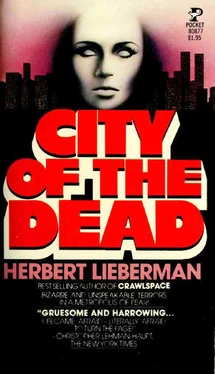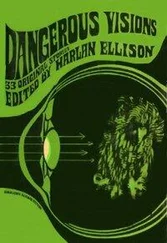Q. “A tall man you would say?”
A. “Yes, sir.”
Q. “Somewhere in the neighborhood of the young man seated beside—”
Defense: “Objection, your Honor.”
Judge: “Sustained. Will prosecution please refrain from such leading questions?”
Q. “Your witness, Counsel.”
Someone in the back of the court is snoring. The shaft of sunlight streaming through the window has slanted several points eastward. The drugged, somnolent air has grown thicker and closer; purple shadows have begun to gather in the far corners of the room.
Konig’s head is pounding. It is this part of it that he hates—the part that makes him physically ill—when they try to twist his words, all of which he has chosen and measured so carefully, and then distort them to their own purposes.
But although the process makes him physically sick, so that he lives in dread anticipation of courtroom appearances, he is, nevertheless, known in the trade as a formidable witness; in the parlance of lawyers, “a cool cookie.” He doesn’t stumble. No one has ever suspected or even had a hint of this vulnerability in the man. He has never shown it. The facade that he brings to court is supremely composed. Glacially aloof. The exterior is serene while the interior churns with rage.
Q. “…so then, is it not noteworthy, Dr. Konig, that you’ve been scrupulously careful to give only rough approximations of such critical data as…”
Konig knows what is coming next. The legal mind is quite predictable, incapable of any great surprises.
Q. “…the assailant’s height? Aren’t your approximations only hypothetical? Wouldn’t you have to concede—”
A. “Yes. That is correct. I believe I stressed the point that estimation of the assailant’s height would be difficult to fix with any certainty. I offer only approximations. That’s all forensic science is capable of at this time. We’re not gods…”
Q. “I would certainly agree with you there.”
Mild laughter throughout the courtroom. At that moment Konig’s eyes happen to fall on the alleged assailant, a surly young thug with a previous arrest record and a known history of violence. Like the others in the court, he, too, appears to be enjoying counsel’s little joke on Konig by smirking widely. The judge stirs himself from private ruminations long enough to gavel the court to silence and call for order. Konig continues, seemingly unfazed.
A. “…but I would also respectfully point out to the court that these approximations are presented within fairly narrow parameters, so that their value as information is not inconsiderable.”
Q. “But still you would have to agree—”
Judge: “The bench recognizes the intent of counsel’s line of questioning here and requests that he refrain from attempting to disparage what the bench deems pertinent and highly expert medical testimony.”
Konig enjoys a small twinge of vindication. He has been up against this counsel before and they have old scores to settle. Now, without seeming pompous or immodest, Konig has scored a few points for the integrity and forthrightness of the Medical Examiner’s Office, while the counsel has come off seeming sly and somewhat captious at best.
Q. “But it seems clear now from your testimony that cause of death cannot be attributed to damage inflicted by the single bullet wound.”
A. “Yes, sir. That is correct. I’ve been very careful to specify that the victim lived for eighteen hours after he was hospitalized, and that the mechanism of death resulted not from damage incurred by the brain but from the lungs, and, strictly speaking, from suffocation.”
Q. “Is that unusual?”
A. “Not at all. Not with this kind of wound. In fact, fairly common. Often injuries to the head caused by contusions will bring on fatal edema of the lung.”
Q. “And is that the case here?”
A. “Yes, sir, it is.”
Q. “So that the bullet wound to young Wilton’s brain was not in itself the cause of death?”
A. “Not in itself, but it was certainly the contributive factor.”
Q: “And if I may backtrack a moment, Doctor, you do not entirely eliminate the possibility of suicide?”
A. “I don’t eliminate it. I only say that given the angle of the bullet’s penetration over the left brow, the fact that the gun was fired from the victim’s left side, where it was also subsequently found, given the distance at which the gun was held, the powder burns, and given the victim’s preference for right-handedness—”
Q. “How do you know the victim was right-handed?”
A. “Well, sir, for one thing, we did a series of microradiographs of Wilton’s dentition. The prevailing direction of toothbrush strokes in the enamel was that of a right-handed person. For another thing, it was documented in medical records sent us by the family physician.”
A mild stir of approval through the courtroom, and the counsel momentarily flustered.
Q. “Let me understand this. Are you saying the victim could not have fired with his right hand?”
A. “I don’t say he couldn’t have. I say it’s extremely unlikely. It’s easier to understand if you turn your right index finger into an imaginary gun and bring your right hand over to your left eye at such an angle that the bullet would come out below your right ear.” With his own finger, Konig demonstrates his point. “It’s an extremely awkward angle, as you can see. Then, if you keep that same position and pull your hand fifteen to eighteen inches away, pointing it downward at the rather steep angle of fifty degrees, as this weapon had been pointed, I think you’ll find it almost impossible.”
Konig, attempting to further demonstrate the improbability of the position, elicits another stir of delight from the court. Obviously, he has impressed the spectators. Not, however, the counsel, who is smiling wickedly.
Q. “But surely, you don’t eliminate, do you, Doctor, the possibility that the victim could have shot himself with his left hand?”
A. “You’re not serious, are you?”
Q. “I ask the questions here, Doctor, and I most certainly am serious.”
A. “You mean that after a lifetime of being right-handed, the victim suddenly for this special occasion decided to become left-handed?”
Q. “Why not? You yourself stated that the gun was found at Wilton’s left side. Wouldn’t that suggest that he’d used his left hand?”
A. “I have never, in forty years’ experience, heard of a right-handed person suddenly becoming left-handed in order to commit suicide.”
Q. “But you haven’t answered my question, Doctor. I have asked you if it is possible for a right-handed person to shoot himself with his left hand—”
A. “I cannot recall in all my—”
Q. “Doctor, just answer the question. Is it possible? Yes or no?”
There’s a palpable suspension of movement while the court, eyes fixed on Konig, waits. Even the incessant coughing, clearing of throats, snuffling of noses, are all held in merciful abeyance while the man on the witness stand weighs the question.
Even as he ponders, Konig’s eyes fall once more on the alleged assailant—the young thug—his attitude now a mixture of swagger and bravado at finding himself the object of so much fuss. Suddenly their eyes meet and for a fraction of a second Konig sees that nasty little smirk flicker there once again—something both defiant and mocking. A jeering taunt born of a child’s sense of indestructibility. A fatal error, that smirk, for in that moment, Konig feels a rush of hate for the boy and a furious need to get him.
A. “Yes, sir, it is possible. But not in this Case. Because in this case, the victim’s left hand was found clutching the first wound over his left breast. Since Wilton lost consciousness immediately after being shot in the head, it is certain that at the precise moment of his losing consciousness, his left hand was very busily occupied trying to staunch the flow of blood from his breast. If I follow your line of reasoning, Mr. Counsel, and assume that Wilton did in fact commit suicide, the only possibility is that he shot himself over the left eyebrow with his left hand, then dropped the gun and grabbed his bleeding breast with the same hand. That would be impossible since we all know that he lost consciousness directly after incurring the head wound and, as a result of massive brain injury to the motor centers, was instantly paralyzed, and undoubtedly never moved a muscle again thereafter. So if he couldn’t have used his right hand, as I have demonstrated, because of the angle of the shot, or his left hand because it was found clutching his left breast, then it follows that someone else must have fired the shot.”
Читать дальше












